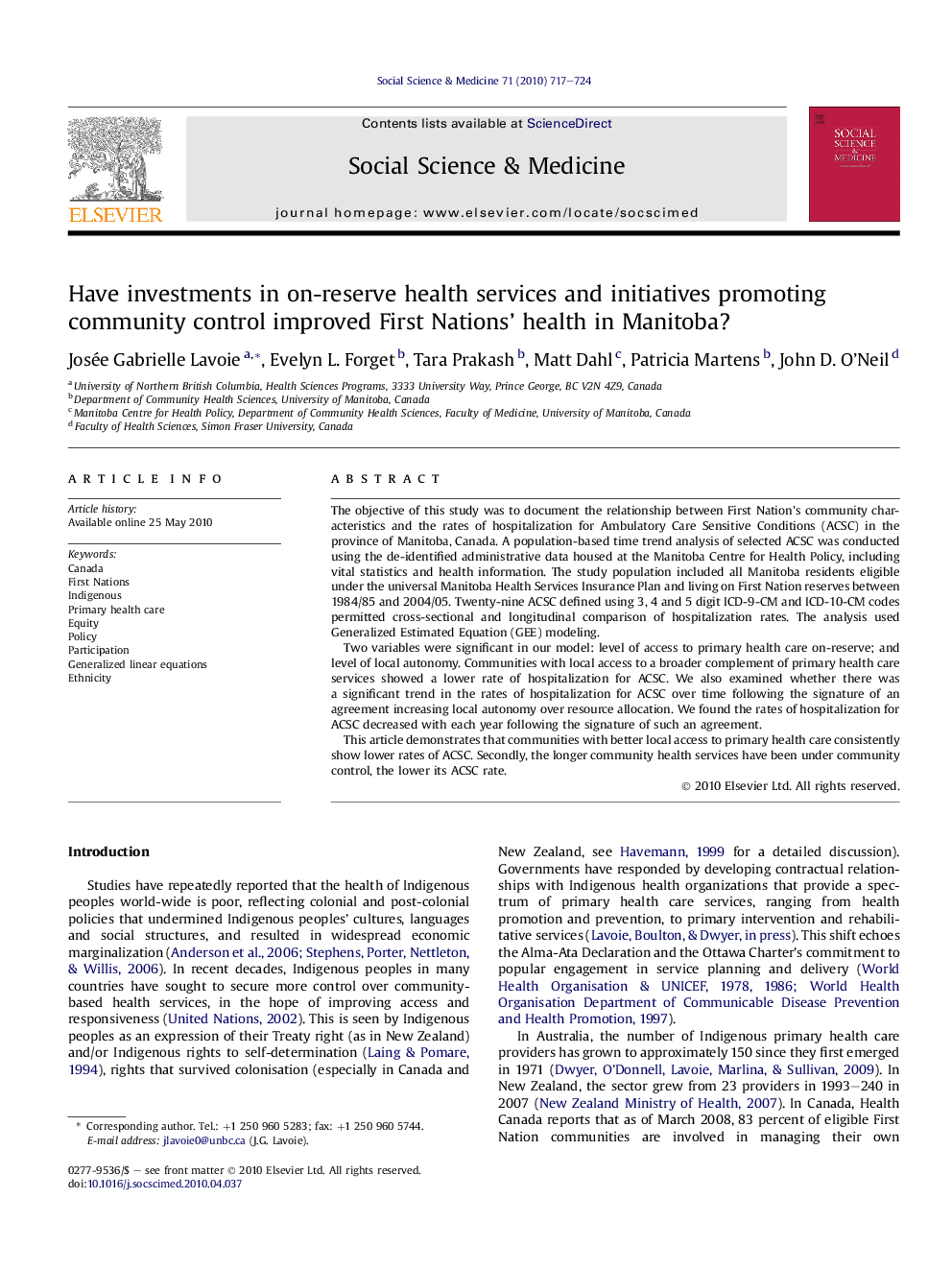| Article ID | Journal | Published Year | Pages | File Type |
|---|---|---|---|---|
| 953008 | Social Science & Medicine | 2010 | 8 Pages |
The objective of this study was to document the relationship between First Nation’s community characteristics and the rates of hospitalization for Ambulatory Care Sensitive Conditions (ACSC) in the province of Manitoba, Canada. A population-based time trend analysis of selected ACSC was conducted using the de-identified administrative data housed at the Manitoba Centre for Health Policy, including vital statistics and health information. The study population included all Manitoba residents eligible under the universal Manitoba Health Services Insurance Plan and living on First Nation reserves between 1984/85 and 2004/05. Twenty-nine ACSC defined using 3, 4 and 5 digit ICD-9-CM and ICD-10-CM codes permitted cross-sectional and longitudinal comparison of hospitalization rates. The analysis used Generalized Estimated Equation (GEE) modeling.Two variables were significant in our model: level of access to primary health care on-reserve; and level of local autonomy. Communities with local access to a broader complement of primary health care services showed a lower rate of hospitalization for ACSC. We also examined whether there was a significant trend in the rates of hospitalization for ACSC over time following the signature of an agreement increasing local autonomy over resource allocation. We found the rates of hospitalization for ACSC decreased with each year following the signature of such an agreement.This article demonstrates that communities with better local access to primary health care consistently show lower rates of ACSC. Secondly, the longer community health services have been under community control, the lower its ACSC rate.
